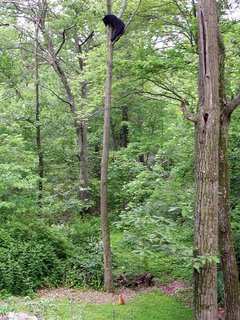Patrick has decided to start a meme, and promptly tagged me with it. Here are the instructions:
This is the Top 10 list that I was about to post when John posted his Favorite Bird Songs list. I wanted to start a new list by posting my "10 Most Wanted Birds". The rules are simple: Post a list of the 10 species that you'd most like to see. You can limit it to a geographic area or cover the whole world. Tag a few people and they in turn will post their lists on their blogs. I'm not sure I got the mechanics of this whole meme thing down, but here it goes anyway.Actually I did one of these already. At the very beginning of the year, I posted a list of ten new species that I wanted to see this year. (I did one for DC, too.) Now that I have seen half of those already, the list really could use some updating, so here is the new version. Since I do not know birds outside North America that well, I will stick to the ABA area. The first five are left over from the old list; the rest are additions.
1. Horned Lark
Somehow I keep missing this species, even on field trips when other people see them. Since I saw a Cerulean Warbler in May, the Horned Lark may end up replacing the Cerulean Warbler as a nemesis bird. Plus I think that open-country birds are cool.
2. Connecticut Warbler
When I made the original list I waffled between this and the Mourning Warbler. As it turns out, I did see a Mourning Warbler, so Connecticut stays on the list.
3. Sora
As I noted in my original post, the rail family is a big gap in my life list. Really I would be happy with this species or any of the other rails. They are pretty tough to find. I do think that the Sora has a neat call.
4. Rough-legged Hawk
We get a few of these in winter every year, but the species is never guaranteed in any given location.
5. Common Redpoll
This is another occasional winter visitor that I have not seen. Usually seeing one requires a trip farther north than where I live.
6. Golden-winged Warbler
One of the few eastern wood warblers that I have not seen or heard.
7. Varied Thrush
I missed this one while I was in Seattle, but there should be more opportunities to see one in the future.
8. Greater Prairie-Chicken
These game birds must have the most comical voice of any North American birds. One day I would like to stand out on the prairie and watch them in action instead of just listening to the CD.
9. Atlantic Puffin
I have been interested in puffins since I first learned about them way back when I was a kid. One of these days I will take a trip up to their breeding grounds to see puffins and other alcids.
10. Acorn Woodpecker
This must be one of our most distinctive woodpeckers. Perhaps I will get a chance to see its clownish face on the west coast sometime.
As for tags... I will tag Pamela of Thomasburg Walks and Rob the Birdchaser. And I will send this back to Jersey by tagging Laura.






















